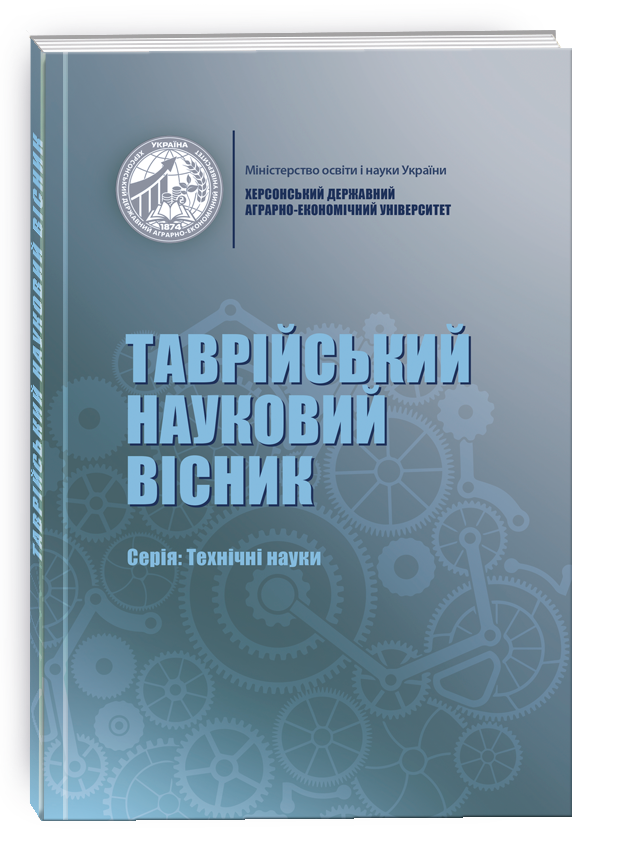BREAST CANCER DETECTION IN HISTOPATHOLOGY IMAGES USING SWIN V2 AND THE INFORMATION EXTREME METHOD
DOI:
https://doi.org/10.32782/tnv-tech.2025.1.12Keywords:
histopathological images, convolutional neural networks, visual transformers, computer-aided diagnosis, medical image analysis, image classification, information-extreme technologyAbstract
The article addresses the application of machine vision in the analysis of histopathological images. The objective of the study is to improve the accuracy of automatic breast cancer detection in histopathological images by developing and implementing novel hybrid architecture that combines modern visual transformers with the information-extreme intellectual technology.The paper presents a comparative analysis of the effectiveness of different neural network architectures for solving the problem of binary classification of histopathological images. Two fundamentally different approaches were investigated: Convolutional Neural Networks (CNN) based on ResNet architecture and Visual Transformers (ViT) based on the Swin Transformer V2 architecture. These approaches were used as base models in combination with the Information Extreme Technology (IET) for image classification.The focus is on the model based on Swin Transformer V2 (SwinV2). SwinV2 employs an innovative attention mechanism in fixed windows with shifting, which ensures linear computational complexity relative to the image size, as opposed to quadratic complexity with global attention. The developed model utilizes a large SwinV2 architecture with 3 billion parameters, pre-trained on the extensive ImageNet-22K dataset, followed by fine-tuning on the specialized BreakHis dataset.Experimental studies conducted on a balanced test set (847 samples for each class) demonstrate that the proposed approach using SwinV2 and IET achieves a classification accuracy of 98.5%, which is 10% higher than the results of a similar system based on ResNet (88.98%).This significant improvement is attributed to the ability of transformers to more effectively process global dependencies and object shapes in images, which is particularly important when analyzing the morphology of cell nuclei in histopathological images.The study analyzed the key differences between CNN and ViT architectures, specifically their different biases towards textures and shapes when processing images. It was established that CNNs exhibit a strong inclination towards analyzing local texture patterns, while ViTs perform significantly better with global information about object shapes.Based on the research results, promising directions for further studies were outlined, including the development of ensemble methods that combine the advantages of both architectures to create more reliable diagnostic systems with high accuracy. The proposed approach can be adapted for the analysis of other types of histopathological images and integrated into existing computer- aided diagnostic systems.
References
Aljehani, M. R., Alamri, F. H., K Elyas, M. E., Almohammadi, A. S., Alanazi, A. S. A., & Alharbi, M. A. (2023). The importance of histopathological evaluation in cancer diagnosis and treatment. International Journal of Health Sciences. https://doi. org/10.53730/ijhs.v7ns1.15270
Hosseini, M. S., Ehteshami Bejnordi, B., Trinh, V. Q.-H., Chan, L., Hasan, D., Li, X., Yang, S., Kim, T., Zhang, H., Wu, T., Chinniah, K., Maghsoudlou, S., Zhang, R., Zhu, J., Khaki, S., Buin, A., Chaji, F., Salehi, A., Nguyen, B. N., Samaras, D., & Plataniotis, K. N. (2024). Computational pathology: A survey review and the way forward. Journal of Pathology Informatics, 15, Article 100357. https://doi.org/10.1016/j. jpi.2023.100357
Greeley, C., Holder, L. B., Nilsson, E., & Skinner, M. K. (2024). Scalable deep learning artificial intelligence histopathology slide analysis and validation. Dental Science Reports, 14(1). https://doi.org/10.1038/s41598-024-76807-x
Laxmisagar, H. S., & Hanumantharaju, M. C. (2020). A survey on automated detection of breast cancer based histopathology images. In Proceedings of the 2nd International Conference on Innovative Mechanisms for Industry Applications (ICIMIA) (pp. 19-24). IEEE. https://doi.org/10.1109/ICIMIA48430.2020.9074915
He, L., Long, L. R., Antani, S., & Thoma, G. R. (2012). Histology image analysis for carcinoma detection and grading. Computer Methods and Programs in Biomedicine, 107(3), 538-556.
Stenkvist, B., Westman-Naeser, S., Holmquist, J., Nordin, B., Bengtsson, E., Vegelius, J., Eriksson, O., & Fox, C. H. (1978). Computerized nuclear morphometry as an objective method for characterizing human cancer cell populations. Cancer Research, 38(12), 4688–4697.
Takahashi, S., Sakaguchi, Y., Kouno, N., Takasawa, K., Ishizu, K., Akagi, Y., Aoyama, R., Teraya, N., Bolatkan, A., Shinkai, N., Machino, H., Kobayashi, K., Asada, K., Komatsu, M., Kaneko, S., Sugiyama, M., & Hamamoto, R. (2024). Comparison of vision transformers and convolutional neural networks in medical image analysis: A systematic review. Journal of Medical Systems, 48(1), Article 84. https://doi.org/10.1007/ s10916-024-02105-8
LeCun, Y., Bottou, L., Bengio, Y., & Haffner, P. (1998). Gradient-based learning applied to document recognition. Proceedings of the IEEE, 86(11), 2278-2324. https:// doi.org/10.1109/5.726791
Azadbakht, A., Kheradpisheh, S. R., Hassani, I. K., & Masquelier, T. (2022). Drastically reducing the number of trainable parameters in deep CNNs by inter-layer kernel-sharing. arXiv preprint arXiv:2210.14151.
He, K., Zhang, X., Ren, S., & Sun, J. (2016). Deep residual learning for image recognition. In Proceedings of the IEEE Conference on Computer Vision and Pattern Recognition (CVPR) (pp. 770-778). IEEE. https://doi.org/10.1109/CVPR.2016.90
Dosovitskiy, A., Beyer, L., Kolesnikov, A., Weissenborn, D., Zhai, X., Unterthiner, T., Dehghani, M., Minderer, M., Heigold, G., Gelly, S., Uszkoreit, J., & Houlsby, N. (2021). An image is worth 16x16 words: Transformers for image recognition at scale. In Proceedings of the 9th International Conference on Learning Representations (ICLR). https://openreview.net/forum?id=YicbFdNTTy
Wu, C., & He, T. (2024). A survey of applications of vision transformer and its variants. In Proceedings of the 10th IEEE International Conference on Intelligent Data and Security (IDS) (pp. 21-25). IEEE. https://doi.org/10.1109/IDS62739.2024.00011
Vaswani, A., Shazeer, N., Parmar, N., Uszkoreit, J., Jones, L., Gomez, A. N., Kaiser, Ł., & Polosukhin, I. (2017). Attention is all you need. In Proceedings of the 31st International Conference on Neural Information Processing Systems (NIPS) (pp. 6000-6010).
Lee, R. S. T. (2024). Transfer learning and transformer technology. In Natural Language Processing: A Textbook with Python Implementation (pp. 175-197). Springer Nature Singapore. https://doi.org/10.1007/978-981-99-1999-4_8
Papchenko, O., Kuzikov, B. (2025). Hybrid deep learning and information-extreme approach for breast cancer histopathological image classification. Herald of Khmelnytskyi National University. Technical Sciences, Vol. 347 (Issue 1), pp. 175-181. https://doi.org/10.31891/2307-5732-2025-347-24
Liu, Z., Hu, H., Lin, Y., Yao, Z., Xie, Z., Ning, J., Cao, Y., Zhang, Z., Dong, L., Wei, F., & Guo, B. (2021). Swin transformer V2: Scaling up capacity and resolution. arXiv preprint arXiv:2111.09883. https://doi.org/10.48550/arXiv.2111.09883
Russakovsky, O., Deng, J., Su, H., Krause, J., Satheesh, S., Ma, S., Huang, Z., Karpathy, A., Khosla, A., Bernstein, M., Berg, A. C., & Fei-Fei, L. (2015). ImageNet large scale visual recognition challenge. International Journal of Computer Vision, 115(3), 211-252. https://doi.org/10.1007/s11263-015-0816-y
Spanhol, F., Oliveira, L., Petitjean, C., & Heutte, L. (2016). A Dataset for Breast Cancer Histopathological Image Classification. IEEE Transactions on Biomedical Engineering, 63, 1455-1462. https://doi.org/10.1109/TBME.2015.2496264.
Iwata, A., & Okuda, M. (2024). Quantifying Shape and Texture Biases for Enhancing Transfer Learning in Convolutional Neural Networks. Signals, 5(4), 721-735. https://doi.org/10.3390/signals5040040







